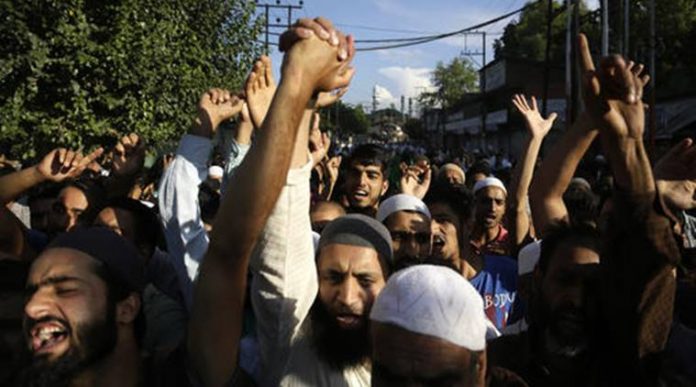New Delhi, (IANS): The Supreme Court on Monday asked why youths aged 13 to 20 years were part of the protesting crowds in Jammu and Kashmir, and sough the assistance of members of the Srinagar bar in addressing the situation.
What are children doing in these crowds, why are they placed in the front of the protesting mobs and why there is not one person of 40 or 50 years age in these crowds, asked the bench of Chief Justice Jagdish Singh Khehar, Justice D.Y. Chandrachud and Justice Sanjay Kishan Kaul.
The query came as J&K Bar Association’s Srinagar chapter President Mian Abdul Qayoom told the bench about the large number of youth who have been rendered blind after being hit by pellets from the guns used by the security forces.
As Qayoom said that a time will come when there would be generation of blind people, the bench asked him to tell the best way to deal with the situation and assist the court for this purpose.
Chief Justice Khehar said that the issue was “very important” and the members of the bar being “educated and enlightened” can help in “devising the ways and means how it can be solved”.
It told the leaders of the J&K Bar Association, which also included its seniormost member Zaffar A. Shah, that they have to be “sincere and honest” in addressing the issue and “today you can’t take sides”.
Reminding them that they represented the Bar and the Bar in this country has played “greatest role”, the bench said: “You are neither here nor there. You have to do right things, on the right side of the law, if you want to be somebody in helping the situation.”
Directing the next hearing of the matter on April 28, the bench said that individual grievances could not be mixed up with larger and important issues as Qayoom tried to project the cases of a large number of young boys left blind.
“This is a political issue, it has to be settled. You can’t kill people, blind people, maim people,” he said, telling the court that stone pelting takes place only when security forces chase the protesters.
But the court said: “This is not the way to look at the issue. You will say one thing, other side will say another thing. Focus on the totality of circumstances. You have to contribute to stop the mobs. Law must prevail on both the sides.”
The court’s observation came in the course of the hearing of a petition by the Jammu and Kashmir High Court Bar Association for a ban on the use of pellet guns by security forces.
The lawyers’ body had challenged a Jammu and Kashmir High Court order which said that it was entirely for security agencies to decide what kind of force was needed to be used in a given situation.
Earlier Attorney General Mukul Rohatgi told the court that the security forces were using the pellet guns only as last resort when violent protesting mobs refuse to budge and attack them.
“It is not a usual protest or dharma, every protest end into violence and unfortunately younger element provides the shield,” Rohatgi told the court as he took it through the graded response of the security forces to deal with each of the situation.
He also said that the security forces were looking into the use of some chemical mixed with that produces obnoxious smell to disperse the crowds.
Expressing his doubts on how much success these methods including lazier dazzlers and high intensity noise devises would have, he showed to the bench pictures of masked men attacking the security forces. He told the court that 100 security personnel were injured on the polling day in Kashmir.
The court in the last hearing of the matter on March 27 had asked the government to look for technology-based alternatives to pellet guns to control mobs in Jammu and Kashmir.

